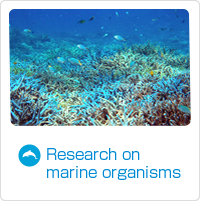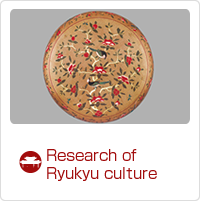- Home
- Okinawa Churashima Foundation Research Institute
- Studies of Marine Animals
- Research activity report
- How do the white shark embryos receive oxygen without placenta?

Research on marine organisms
How do the white shark embryos receive oxygen without placenta?
 Enlarged image of the inner wall of a great white shark uterus. Its surface is covered in fine protrusions.
Enlarged image of the inner wall of a great white shark uterus. Its surface is covered in fine protrusions.
Most fish reproduce by laying eggs, however, many sharks nurture their fetuses in the womb (like mammals) and then give birth. Great white sharks are one of them. The fetus of a mammal is connected to the mother with an umbilical cord to supply oxygen. Sharks including the great white shark do not have an umbilical cord to supply oxygen to the fetuses. For many years, it has been a mystery as to how the fetuses receive oxygen.
This question has been answered by detailed examination of shark uteruses conducted by the Okinawa Churashima Foundation Research Center Animal Laboratory. According to their research the inner wall of the uterus of the great white shark is covered in fine protrusions that increase its surface area by around 60 times. It is estimated the oxygen exchange efficiency at the surface of the uterus is 250 to 400 times higher than other shark species, and is comparable to fish gills.
It is thought the uterus of great white sharks provides a good supply of oxygen and the fetus can absorb the oxygen that dissolves in the uterine fluid.
This means one more mystery concerning the reproduction mechanism of the great white sharks has been solved.
Authors
Taketeru Tomita, Ryo Nozu, Masaru Nakamura, Shohei Matsuzaki, Kei Miyamoto, Keiichi Sato
Title
Live-bearing without placenta: Physical estimation indicates the high oxygen-supplying ability of white shark uterus to the embryo
Journal
Scientific Reports 7:11744. doi:10.1038/s41598-017-11973-9
PDF available at:http://www.nature.com/articles/s41598-017-11973-9
Copyright (c) 2015 Okinawa Churashima Foundation. All right reserved.




























